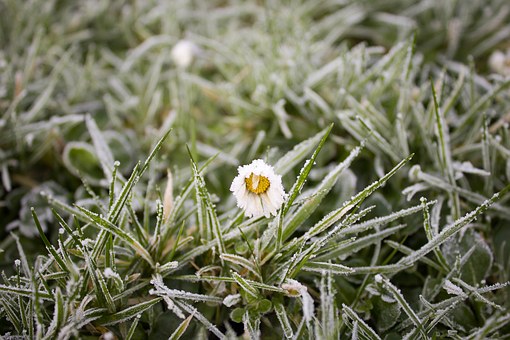
If the temperature falls into the 30s at night but stays above freezing and frost forms on your lawn, it can cause damage or even kill the grass. Frost is harmful to grass because it increases transpiration. This is the process in which moisture is sent through plant pores, or stoma. Moisture that is sent through stoma and moisture in the air coat and protect plants. On a clear night with calm wind, moisture can freeze on the surface and form frost, which can cause the grass blades to become dehydrated and brittle.
The good news is that many lawns contain perennial grasses. The effects of frost will depend on the variety of grass you have, but there are some general guidelines you can follow to protect your grass.
After a frost, you should not walk on the grass until the air has warmed up. Weight on grass covered with frost can cause the leaves to break. When the frost thaws, it can rehydrate the leaves.
If your lawn has an annual grass, it should be reseeded after a frost in order to survive. You can use annual grass to fill in the lawn until a perennial grass has time to become established. Some biennial grasses, such as Italian ryegrass, can survive a frost.
Perennial grasses can turn brown and become dormant after the temperature gets below freezing. The roots and crowns, where the roots meet the stems, will continue to grow.
If you have perennial turfgrass, keep it hydrated after a frost. Your lawn will need about an inch of water per week, including rainfall. You can continue to water the grass as it becomes dormant. Do not allow water to puddle because that can prevent the roots from getting air and light.
If you have a perennial warm season grass, it may become dormant when the temperature gets into the 40s. Cool-season perennials don’t enter dormancy until the temperature gets below freezing.
You can reduce the amount of damage caused by frost by choosing the right type of grass for your area. Cool-season grasses, such as Kentucky bluegrass, perennial ryegrass, and fescue, grow in spurts in the spring and fall. Warm-season grasses can grow throughout a mild winter and into early summer.
Cut the grass to a height of 2 or 3 inches when the weather is turning colder. That will give it extra tissue that can be lost to frost and will insulate the lawn.
After a frost, don’t mow warm-season grasses until the temperature has risen into the 40s. Only mow cool-season grasses if they are still growing. Don’t mow dormant grasses until spring. Make sure your lawn mower blades are sharp. Dull blades can chop up leaves and damage the grass.
You can make sure your lawn gets enough water by using a sprinkler system. It can be set up with a timer to make sure your lawn gets the right amount of water when needed, even if you are not home. Order a sprinkler system from Sprinkler System Store today.